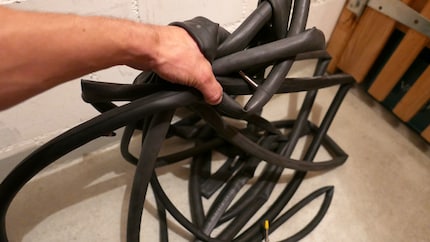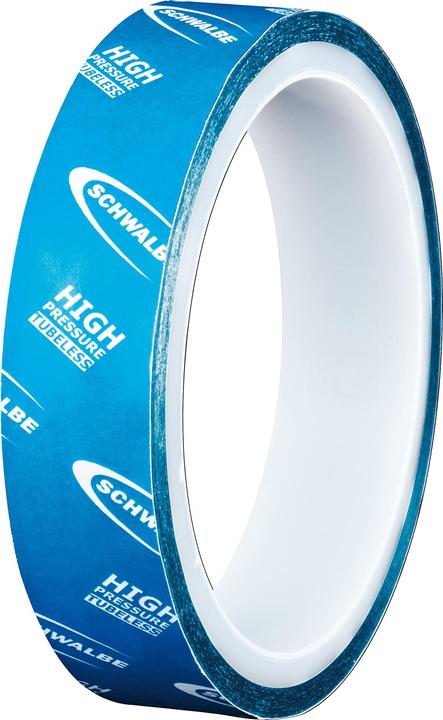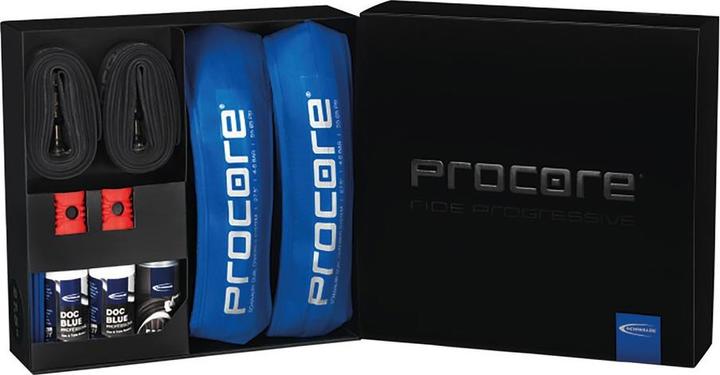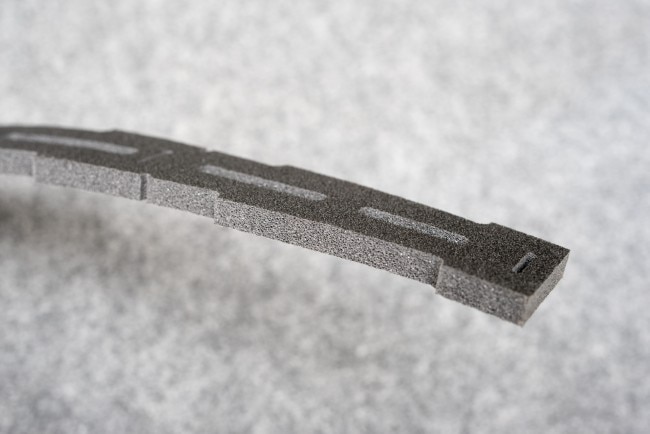

Make your bike puncture-proof: how to make your tyres absorb shards and knocks
And suddenly the air is out. For a long time, I accepted the fact that I suffer a flat tyre at least once a year as fate. Now I know: it's worth upgrading! Here are some tips to avoid the nasty "Pffffffffffffffffff".
I really can't confirm that broken glass brings good luck. At least when I've been travelling by bike, shards of glass have been my undoing more than once. A punctured tyre - and with the air out of the tyre, the good mood disappears from the day. Most of the time I've cursed, patched the tyre and crossed my fingers for the future. Only to find myself cursing at the side of the road again a few months later. It wasn't until this spring that I got to grips with the cause and fitted puncture protection tyres. The Schwalbe Marathon Plus protects with a layer of special rubber and is said to be virtually indestructible, which I can only confirm so far. I really don't want to do without these tyres any more. [[productlist:318575]]
An overview of all models
For me, this makes a big difference in everyday life, but there's more to it. After all, I've also had punctures on my racing bike and stood around in the woods with a flat tyre on my mountain bike without a repair kit or spare tube. My own fault, I know. But a good reason to do better in future. That's why I asked Daniel Feucht, Category Marketing Specialist Sport, for more tips for a puncture-free future.

Basics for avoiding breakdowns that are often forgotten:
- Check the air pressure: The optimum air pressure range can be found on the side of all bicycle tyres. High air pressure reduces the risk of punctures.
- Check tyres: If your tyres become brittle and cracked, it's time to replace them.
- Check the rim tape: When you change the inner tube, you should also take a look at the rim tape. If it is a poor fit, the inner tube may be damaged.
- Powder the inner tube: Powdering the inner tube before fitting prevents "tube migration", which can damage the valve.
- Ride with foresight: You can avoid many hazards such as broken glass and sharp stones. "Snakebites can be avoided by not driving uncontrollably onto kerbs or tramlines. Especially if the tyre pressure is too low, you will otherwise punch two holes in the inner tube with the rim.
Tubeless: Where there's no inner tube, there's no puncture
Another way to tackle the puncture problem: Get rid of the inner tube! Tubeless technology has long been standard for cars and motorbikes and is now well established for mountain bikers. Road cyclists are also using it more and more, but tubeless has not yet really arrived on everyday bikes. The advantages of the tubeless system are obvious: you don't have to worry about punctures, you also have better rolling resistance and better traction off-road, as you can also ride the tyres with low air pressure.
So just down with the old tyres and up with a tubeless model? It's not quite that simple, as several components are required for tubeless systems: The rim, tyre, valve and rim tape must be designed for this and fit together. If you want to switch, you need to check whether your rims are tubeless ready. Appropriate models have notches on the rim wall or rim base into which the tyre bead can clamp. They are sealed with the appropriate rim tape and valve. If your rims are ready, you still need a matching tyre and finally, small holes and air locks are closed with a sealant.
Puncture protection for mountain bikers
If you ride a mountain bike, you can install additional puncture protection in addition to the tubeless system. This is particularly recommended for expensive carbon rims. With the Schwalbe Procore system, a second, smaller high-pressure inner tube is fitted. It prevents the tyre from coming off the rim and offers a high level of puncture protection. A slightly cheaper option is the Huck Norris Anti-Snakebite Kit. A ring made of foam protects the rim and the tyre from punctures.
Sealant as additional protection
If the rims on your bike are not tubeless ready, you cannot fit the system. What you can still do, however, is use tight milk. If you fill it into the inner tube, it will remain more durable. However, this is not one hundred per cent puncture protection - and you will have to replace the inner tube after a few months at the latest.
Equipment for emergencies
The quickest way to get back on your bike is with a breakdown spray. In an emergency, spray the sealant directly into the tyre via the valve using compressed air. Whether tubeless or not doesn't matter. You can attach the spray directly to the bike using a holder. That's a good thing, because it's only useful if you have it with you - and with the right things in your luggage, you'll certainly be better off than me in an emergency. At least so far. I'm sticking with the inner tube for now, but from now on at least patch kit and pump are always with me. If it does go "Pffffffffffffffffff" again, I'll be prepared. [[productlist:6198277,318469,5630190,6054067,2488961]]
Simple writer and dad of two who likes to be on the move, wading through everyday family life. Juggling several balls, I'll occasionally drop one. It could be a ball, or a remark. Or both.
Practical solutions for everyday problems with technology, household hacks and much more.
Show all



